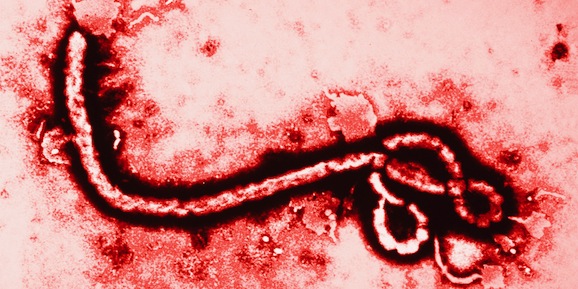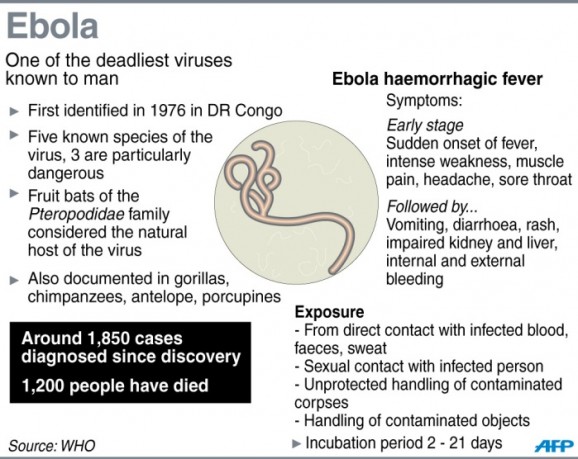Ebola: CDC Confirms The First Case On U.S. Soil In Dallas
This article is more than 2 years old
 You may already be aware of this, but Ebola is terrifying. With the current glut of zombie apocalypse narratives like The Walking Dead sweeping across popular culture, the Ebola virus is about the closest thing we have. Sure, it won’t make your loved ones hungry for brains or bring them back from the dead, but this particular hemorrhagic fever is a nasty piece of business. The disease has been all over the news lately, with outbreaks ravaging parts of Africa, but now it’s coming stateside, with a case confirmed in Dallas. If you’ve seen movies like Outbreak or Contagion, that’s exactly where our minds immediately went.
You may already be aware of this, but Ebola is terrifying. With the current glut of zombie apocalypse narratives like The Walking Dead sweeping across popular culture, the Ebola virus is about the closest thing we have. Sure, it won’t make your loved ones hungry for brains or bring them back from the dead, but this particular hemorrhagic fever is a nasty piece of business. The disease has been all over the news lately, with outbreaks ravaging parts of Africa, but now it’s coming stateside, with a case confirmed in Dallas. If you’ve seen movies like Outbreak or Contagion, that’s exactly where our minds immediately went.
The patient, who is not being publicly identified, is being kept under “strict isolation” at Texas Health Presbyterian Hospital Dallas while the CDC investigates the situation. This is the first substantiated case of this latest strain of Ebola on American soil. Others have been tested, but those came back negative.
According to repots, the patient contracted the virus in West Africa, though the exact means of transmission are unclear at this point. Officials also aren’t saying if the man is a U.S. citizen or not, only revealing that he was “visiting family.” Ebola is not airborne, and is transmitted through blood and other bodily fluids, so the flight information is not being released to the public unless some new information comes to light. CDC’s Dr. Tom Frieden says, “There is zero risk of transmission on the flight. He was checked for fever before getting on the flight.”
After arriving from Liberia on September 20, the patient first exhibited symptoms on September 24, sought out medical care on September 26, and was admitted to the hospital on September 28. He has been in isolation ever since, and with all the talk of this bug in the news, the hospital had already taken preparation for just such an event and installed a “robust infection control system.” CDC and hospital staff are continuing to monitor the people the patient came into contact with for 21 days, and they, too, will be isolated if they develop a fever in that time.
There is no specific treatment for Ebola, which kills 50 to 90% of those infected, though there are some recent developments that have shown promise. Of these, the most well known is ZMapp, an experimental serum that was given to Kenneth Brantly and Nancy Writebol when they contracted the disease in Africa earlier this year, though supplies in the U.S. have since run out.
 At the moment, the World Health Organization estimates that the current Ebola outbreak has infected 6553 people, killing 3083 of them. Estimates say that as many as 1.4 million people worldwide could be affected by the disease by January 2015 if it is not slowed down, as cases have been doubling every three weeks. Guinea, Sierra Leone, and Liberia are the areas hardest hit by the epidemic.
At the moment, the World Health Organization estimates that the current Ebola outbreak has infected 6553 people, killing 3083 of them. Estimates say that as many as 1.4 million people worldwide could be affected by the disease by January 2015 if it is not slowed down, as cases have been doubling every three weeks. Guinea, Sierra Leone, and Liberia are the areas hardest hit by the epidemic.
Officials are preaching calm, telling people not to panic, reminding the public that it is easier to catch the flu than to contract Ebola, and that there is no public health threat in the U.S. at the moment. That said, they are preparing for every eventuality, with epidemiologists tracking the disease, and teams in place to respond should that become necessary.












